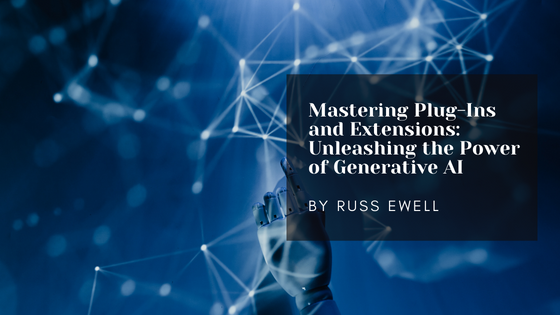In the rapidly evolving landscape of technology, the integration of generative artificial intelligence (AI) has introduced revolutionary ways to enhance our digital experiences. One prominent area where this transformation is being felt is in the realm of plug-ins and extensions. These tiny software components, often overlooked, are becoming powerhouses of innovation thanks to the infusion of generative AI. This blog will delve into some valuable tips on how to make the most of plug-ins and extensions through generative AI.
Automation and Customization
Generative AI empowers developers to create plug-ins and extensions to automate repetitive tasks and customize user experiences. Imagine an e-commerce website that uses AI-powered extensions to analyze user behavior and recommend products tailored to their preferences. As users interact with the site, the AI-driven extension learns and refines its suggestions, ultimately enhancing user engagement and sales.
Enhanced Creative Workflows
For content creators, the integration of generative AI into plug-ins brings a breath of fresh air. Photo and video editing tools incorporate AI-driven suggestions that enhance the artistic process. A photographer using an AI-powered plug-in might receive real-time suggestions on adjusting lighting, color grading, or even composition based on the AI’s analysis of the image. This symbiotic relationship between human creativity and AI assistance leads to faster, more polished end products.
Data Analysis and Visualization
Generative AI-enabled plug-ins can also be invaluable for data analysis and visualization tasks. For instance, in spreadsheet software, extensions could generate interactive graphs and charts that dynamically adapt to changing data. These AI-driven visualizations provide insights that are not only visually appealing but also help users better comprehend complex data sets.
Natural Language Processing (NLP) Empowerment
NLP-powered extensions are transforming the way we interact with applications. AI-infused browser plug-ins can automatically summarize articles or translate content into different languages. In email communication, they might suggest contextually relevant responses, saving time and ensuring efficient communication.
Cross-Application Synergy
Generative AI is fostering collaboration between different applications through plug-ins and extensions. For example, a graphic design software extension could translate a hand-drawn sketch into a digital format and then seamlessly transfer it to a 3D modeling tool for further refinement. This interconnectedness streamlines workflows and boosts productivity.
Personalized Learning and Education
Educational platforms are leveraging generative AI plug-ins to offer personalized learning experiences. These extensions analyze a learner’s progress, adapt the curriculum to their pace, and even generate custom quizzes to reinforce understanding. This tailoring of educational content enhances engagement and retention among learners.
Ethical Considerations
While the integration of generative AI into plug-ins and extensions presents exciting opportunities, it also raises ethical concerns. Developers must be conscious of the potential biases that AI models can carry and take measures to ensure fairness and transparency. Regular updates and ethical guidelines should be followed to maintain user trust.
The fusion of generative AI with plug-ins and extensions is reshaping how we interact with technology. From automating tasks to enhancing creativity and personalizing experiences, the potential of AI-infused extensions is boundless. As this technology continues to advance, a harmonious collaboration between human ingenuity and AI innovation will pave the way for a more efficient and enriched digital world. However, it’s crucial to proceed thoughtfully, considering both the immense benefits and the ethical implications that this transformative fusion brings.

